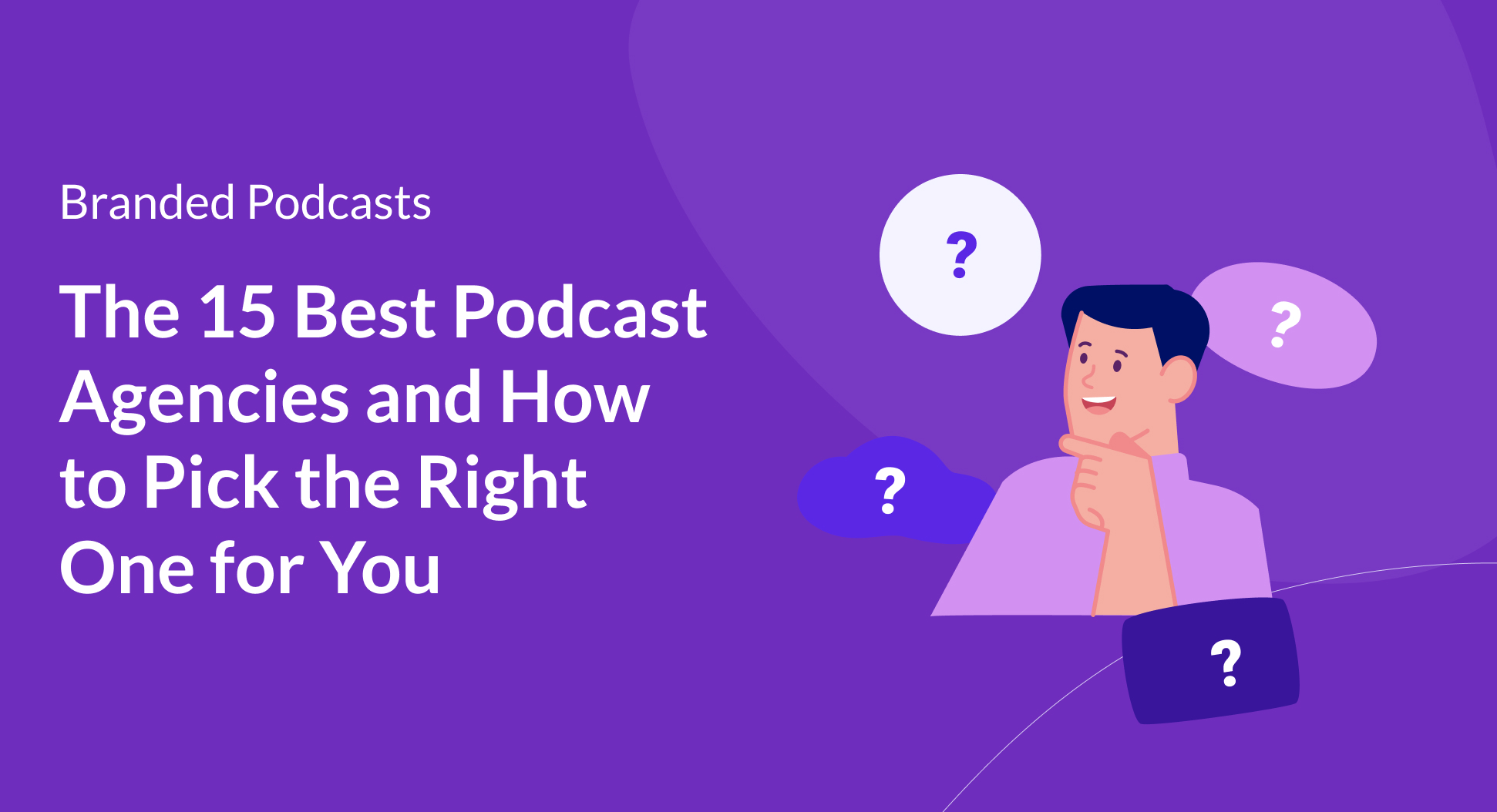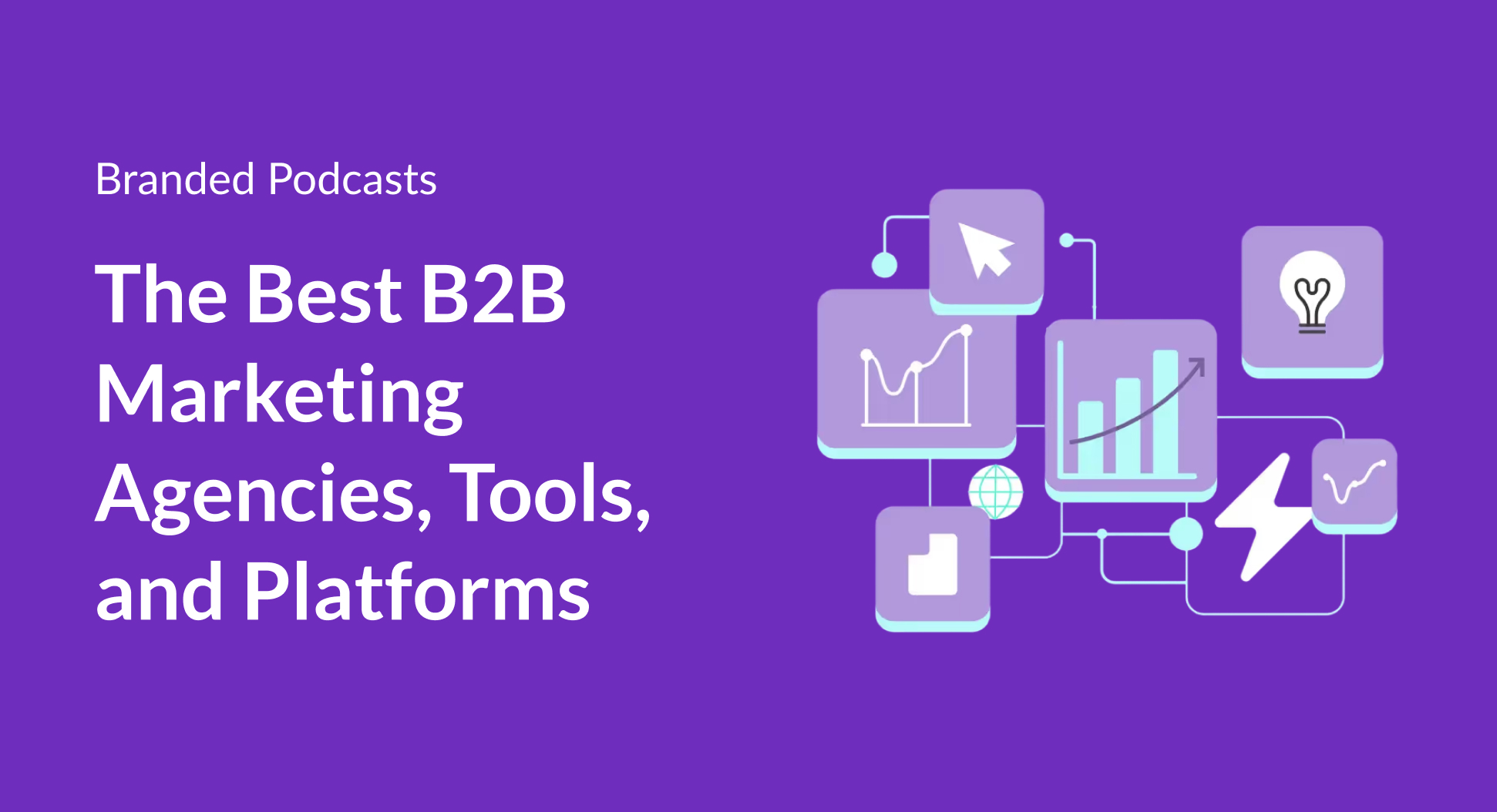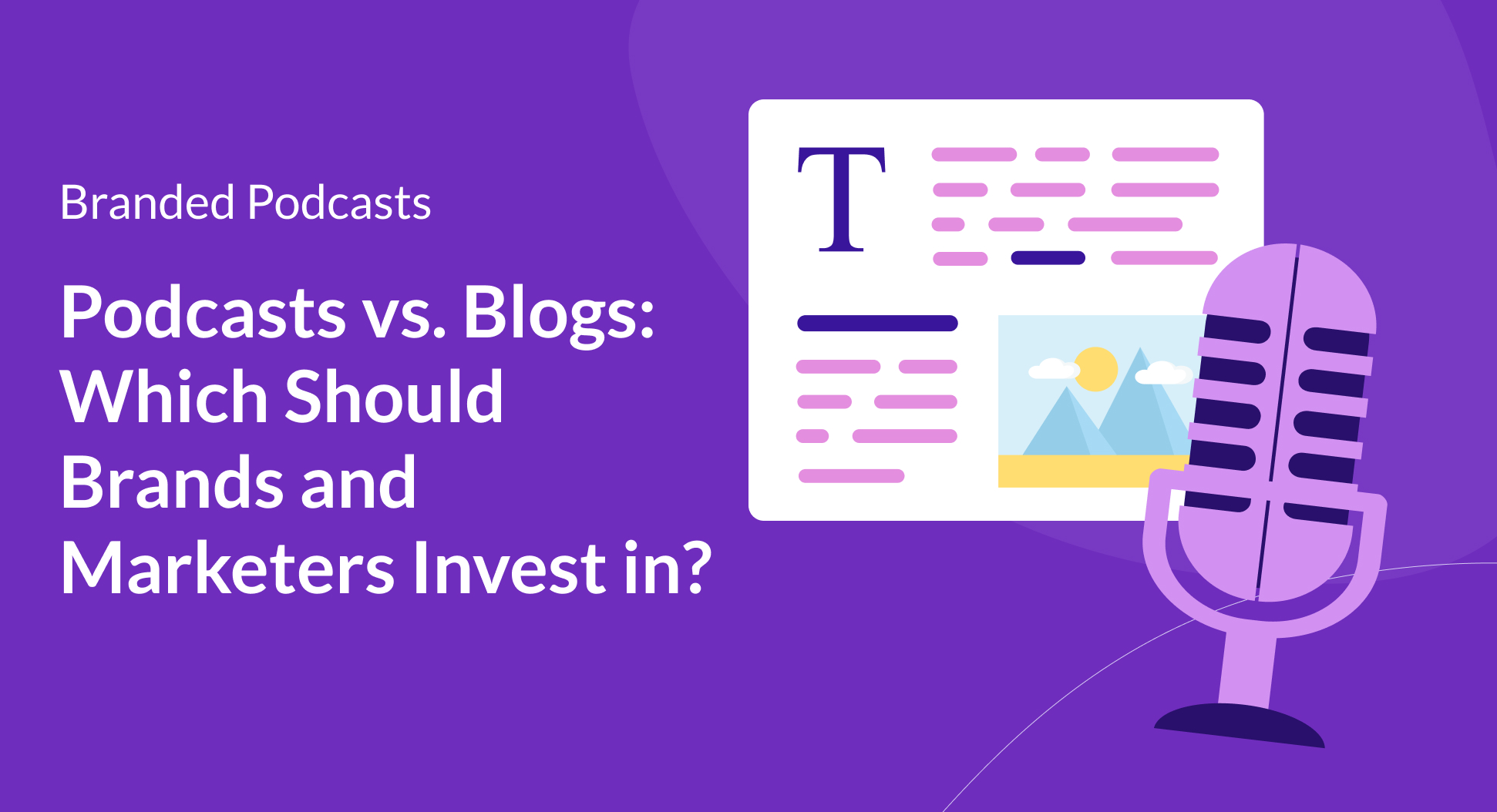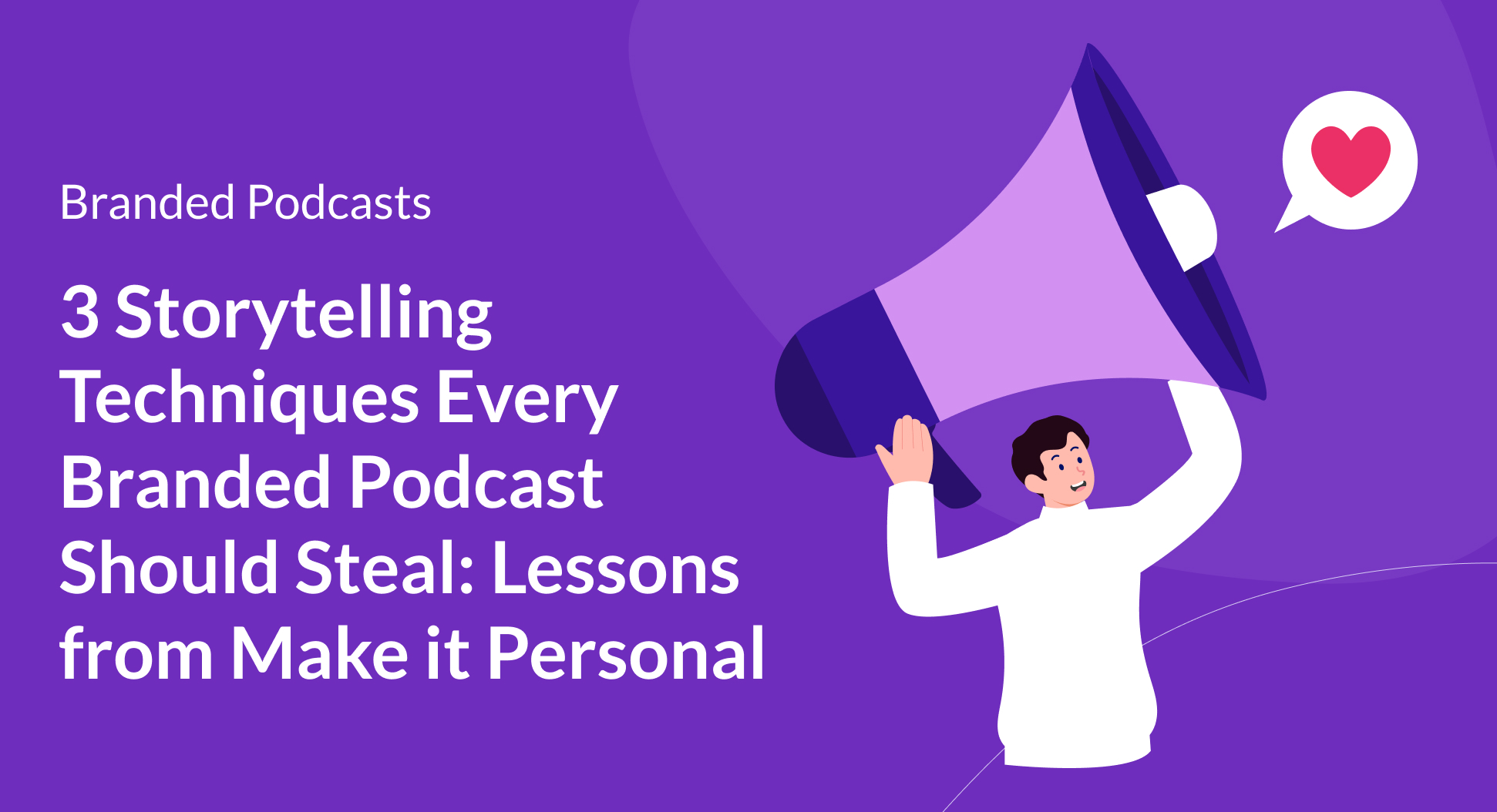Contents
Stages of Production
Podcast production refers to the process of piecing together your series and bringing it to life. This covers three primary steps involved with starting your podcast: pre-production, production, post-production.
Pre-Production
Pre-production includes all of the planning and preparation for your podcast.
Some elements included in this stage are:
- Setting your objective
- Selecting a podcast title
- Creating podcast cover art
- Choosing a structure
- Choosing a format
- Scripting your podcast (if necessary)
Some of these elements will be repeated throughout every episode that you produce and others will be a one-time task when you launch your series (i.e. setting your objective, podcast titles, cover art, etc.)
Production
Production is when you begin recording your podcast. Whether your podcast is remote or in-person, this is when you’ll be hitting the record button and getting all of the content you need for the post-production stage.
Post-Production
Post-production involves editing your podcast to get it to the best possible quality before you release it to your listeners. This is where you really start to shape and bring your podcast to life.
Some elements of post-production include:
- Audio editing
- Sound design
- Transitions
- Intros/outros
- Mix and mastering
Podcast Production Tips
We’ve produced hundreds of podcast episodes over the past few years and gotten the opportunity to work with some of the biggest and most well-known brands on their company podcasts. Through this, we’ve gathered some key tips and tricks and will be sharing nuggets of podcast wisdom with you from our team of expert audio producers.
1. Plan
Our first tip: plan.
Too many podcasters jump straight into recording their show without any planning and strategy. We’re here to remind you that planning for podcast production is key.
There are numerous areas that you should be planning out. Let’s get into a few:
Podcast Objective
Why are you creating your podcast? What’s the goal of the series? Sit down and really ask yourself why this piece of content should exist.
Sample Objectives:
- Lead Generation
- Thought Leadership
- Relationship Building
- Awareness
Ideal Listener
Who do you want to have listening to your podcast? What makes your show different from the other ones your audience is listening to? Why are they going to choose your show and what incremental value is it going to be adding?
These are all questions you should be asking yourself. Think of this not only in terms of the actual content provided, but also in the way the content is presented (i.e. style, format, host abilities, etc.).
Format and Structure
Your podcast objective and ideal listener profile is going to direct the format and structure of your series. For example, an interview podcast is great for relationship building, lead generation, and awareness, whereas a solo discussion is fitting for thought leadership.
Sample Formats:
- Interview
- Solo Discussion
- Narrative
- Multi-Story
Scheduling
The last area that you want to be planning for podcast production is your schedule. So many individuals get excited about the idea of podcasting but don’t seem to ever take any action. To avoid this, create a schedule for yourself and your podcast. What days do you want to be recording? When will you be editing your podcast? What days will you release episodes?
This will help to hold yourself accountable and ensure that you get all of your preparation and content done on time.
Sample Schedule:
- Sundays you plan for your next episode;
- Tuesdays you record your episode;
- Wednesday-Thursday you edit;
- Fridays you distribute your podcast.
2. Give Yourself Runway
Give yourself runway. Podcast runway basically means always staying a few episodes ahead. So if you’re releasing episode 10 of your podcast one week, you’re not actually editing episode 10, you’re editing episode 13 because you finished episode 10 a few weeks ago.
Why is this so key? Because life happens. You may have something come up where you can’t record an episode or you don’t have the time to edit. If you have runway, it’s okay if you miss a week.
And you don’t want to skip releasing a week, because consistency is key. When launching your podcast, pick a day of the week that you’ll be releasing episodes on and whether your cadence will be weekly, bi-weekly, or monthly - stick to this schedule because listeners want to know when they can expect new content.
3. Podcast Equipment
The next step in podcast production is equipment. Investing in good podcast equipment will be beneficial to the overall quality of your show.
Microphone
When deciding to get a microphone, consider the space that you're going to record in. Why? Because some microphones do a better job blocking out background noise than others, making your voice sound a lot cleaner.
With dynamic microphones such as the RODE procaster, the noise pick up pattern focuses on the front on the microphone and less on the back which means it's mostly only capturing your voice.
USB or XLR?
For most podcasters with a simple set-up, a USB microphone is far easier since you simply plug the microphone into your computer, open up a recording software, and you're good to go!
XLR microphones are the most durable but costly. They are a different type of microphone that tend to produce a better sound since they send a more balanced signal that isolates the noise. But you can’t simply plug these mics into your computer. You’ll need to invest more into your setup since you’ll need XLR cables and possibly another recording device.
If you want to be more technical and see podcasting as a long term journey then we recommend eventually investing in an XLR microphone.
Headphones
The next piece of equipment that you’ll want to invest in is a good pair of headphones. Noise cancelling over-the-ear headphones are definitely the best. You can get away with bluetooth headphones similar to Airpods or just regular Apple headphones but they tend to allow in more noise (unless they’re noise cancelling).
4. Recording Software
Since we’ve all had to adapt to remote work, we’re assuming that you’re also conducting your interviews remotely rather than in person. Because of this, you’ll need to pick a recording software to use.
At Quill, we use RiversideFM. We’ve found it to be the best in avoiding any sort of technical glitches since the audio and video is recorded locally rather than being dependent on the quality of your internet.
RiversideFM is definitely one of the more pricey options for a remote recording software. There are plenty of options out there but pay attention to how they price their packages as well as whether or not they offer video recording.
When the packages are based on hours it’s easy to run out faster than you’d think. And personally, we’ve found that our clients much prefer having some sort of video option during the recording so that they can see their guest or co-host to make it feel like a more natural discussion.
Check out 14 remote recording software to test out.
5. Best Sound Quality
Quality matters. With over two million podcasts on Apple, there are a lot of shows for listeners to choose from. If your show stands out for having poor audio quality, potential listeners will move on to different shows.
Sound quality doesn’t come from just your equipment (although it’s a huge factor), it also comes from how you record.
Microphone Placement
Whether you have a $100 or a $300 microphone, if you don't place it properly, you're not utilizing the microphone's maximum potential.
Make sure your microphone is about a fist and a half from your mouth. If it's a foot away, there's no point in using your mic -- the sound quality will probably be about the same as if you had recorded using your computer’s mic. On the flip side, if your mouth is pressed up against the mic, it’s going to sound incredibly muffled.
You also need to know how to speak into your microphone. We know it sounds obvious but you’d be surprised at the number of people who do it incorrectly. For example, with the Blue Yeti microphone (a very popular mic among podcasters), some people think that you're supposed to have the tip point at your mouth. However, that's wrong. Where the Blue Yeti picks up your voice is on the sides of the microphone, not the top. So make sure you educate yourself about the microphone that you purchase!
Quick Tip
If you don’t have a room in your house that doesn’t produce an echo or have background noise, try sitting in the smallest room you have or a closet and put a blanket over yourself. We know that this sounds odd but it helps to close in the sound and block out some of the background noise.
6. Slow Down
Podcast Success
Podcasting is a marathon, not a sprint. We watch so many podcasters jump in at hyper-speed and expect to see amazing results because of that.
It’s important to remember that listeners won’t come immediately. Set realistic goals for yourself and your show. Unless you’re a celebrity, it’s highly unlikely that you’ll get thousands of listeners right away. Building a solid audience base can take years, lots of planning, strategy, and podcast marketing.
Our advice? Take a look at your results after you’ve published a few episodes and only then set your goals for the next episode. You need to evaluate how your show is actually performing in order to be able to set goals and predict results.
Podcast Speed
It’s common to see people turn on a microphone and immediately start talking a mile a minute. This could be due to nerves or excitement but it’s important to remember to take a deep breath and speak calmly, slowly, and naturally.
7. Think About Your Listeners
Have your listeners on your mind. Without them, you’ll find it difficult to motivate yourself to keep releasing content and you won’t be able to monetize your podcast whether it’s through sponsors or platforms like Patreon.
Whenever you’re putting out new content, testing new formats, or featuring different guests, analyze how your listeners are reacting to the content. This will help give you a sense of overall direction for your podcast and the content within it.
Also, connect with your audience! Your interaction with your listeners doesn’t need to end once the podcast stops. You can direct listeners to follow you on social media, sign up for newsletters, join slack communities, etc. This gives you an avenue to actually connect and talk to your audience, providing you with more feedback and ideas for your show.
8. Editing
Editing is obviously a key aspect in podcast production, and we have plenty of tips for you. This is when you can really get creative and bring your podcast to life.
Noise Reduction
Most audio editing software, even the free ones (Audacity and GarageBand), come with a noise reduction effect to help reduce constant background sounds like buzzes and hisses. The noise reduction effect is very useful in work from home situations where you don't know what kind of space your guest has (e.g. if they have air conditioning running in the background that they can’t turn off or you hear some consistent noise out their window, etc.).
Shortcut Keys
Programming keyboard shortcuts to common actions (cutting, fade, highlight, ripple delete, etc.) will make editing your podcast faster. Why do something in three clicks, when you can press a button and do it in one?
Quick Tip
For example, we’ve programmed the letter "U" in Adobe Audition to delete and move clips forward at the same time rather than deleting, highlighting the tail end of the edit, and then moving it to fill in the empty space. This has saved our editors time and makes the editing process more efficient.
Plugins and Presets
Although this is a one time investment (usually between $50-$150), there are some magical audio plugins that you can install that will clean up your audio in an instant. Before, we were spending about 10 minutes per track cleaning up background noise, but now we can do most of it in one click. The NS1 Noise Suppressor from Waves audio is a plugin that will remove the background noise from the vocals with a click of a button.
Creating Your Own Presets
In many audio editing software, when you're applying different effects and filters to a voice, you can save your filters and effects for the next time you're editing the same vocals into a preset. That way you don't need to redo the steps every time -- you can load your previous work and you're done!
9. Soft Launch
Always do a soft launch for your show. A great way to do this? Podcast trailers.
A trailer is not only a great sneak peak for your audience, it also ensures that your subsequent episodes will be launched on time. When publishing the first episode of any show on Apple, Spotify, or Google, there is an approval process which can take 72 hours or more.
We’ve seen people have the misfortune of planning the launch of their podcast, setting up PR and marketing for it’s release on a certain day, and then discovering on that day that it’s still going through the approval process (it’s truly heartbreaking). Releasing a podcast trailer a couple weeks prior to your official launch will save you this stress and headache. Once your show is approved on the platforms through your trailer, you can schedule episodes!
10. Find Some Assistance!
Most people don’t realize the amount of time and work that goes into podcast production. With the volume of shows out there, it’s key that you create a well produced show.
So our final tip for you is to get some assistance. Especially if your podcast isn’t your sole focus, it can be hard to keep up! Hiring a freelancer is a budget-friendly way to get some help for your show.
Alternatively, if you have the budget for it, hiring a podcast production agency will take your podcast off your hands completely (or however much of it you want taken off of your plate)! At Quill, we work in partnership with all of our clients to figure out a process and working style that fits best with their or their company’s needs.
Quill Inc. is your branded podcast marketing and production agency. From working with brands such as RBC, CIBC, TD, Axway, The Globe and Mail, and many more, Quill’s goal is to facilitate connections between brands and trusted resources to better inspire, educate, engage, and of course, entertain audiences everywhere.
If you’re looking for expert help for producing and growing your podcast, get in touch with our team!


.avif)

.avif)




.png)

.png)




.png)
.png)
.png)
.png)